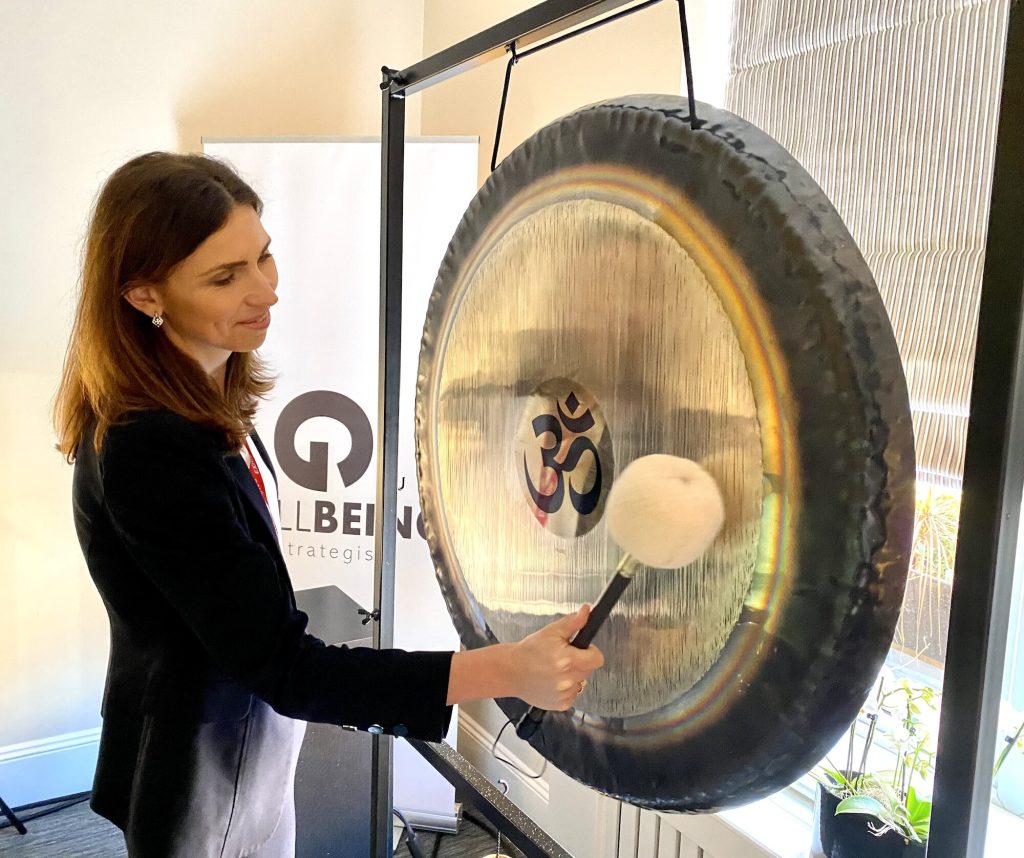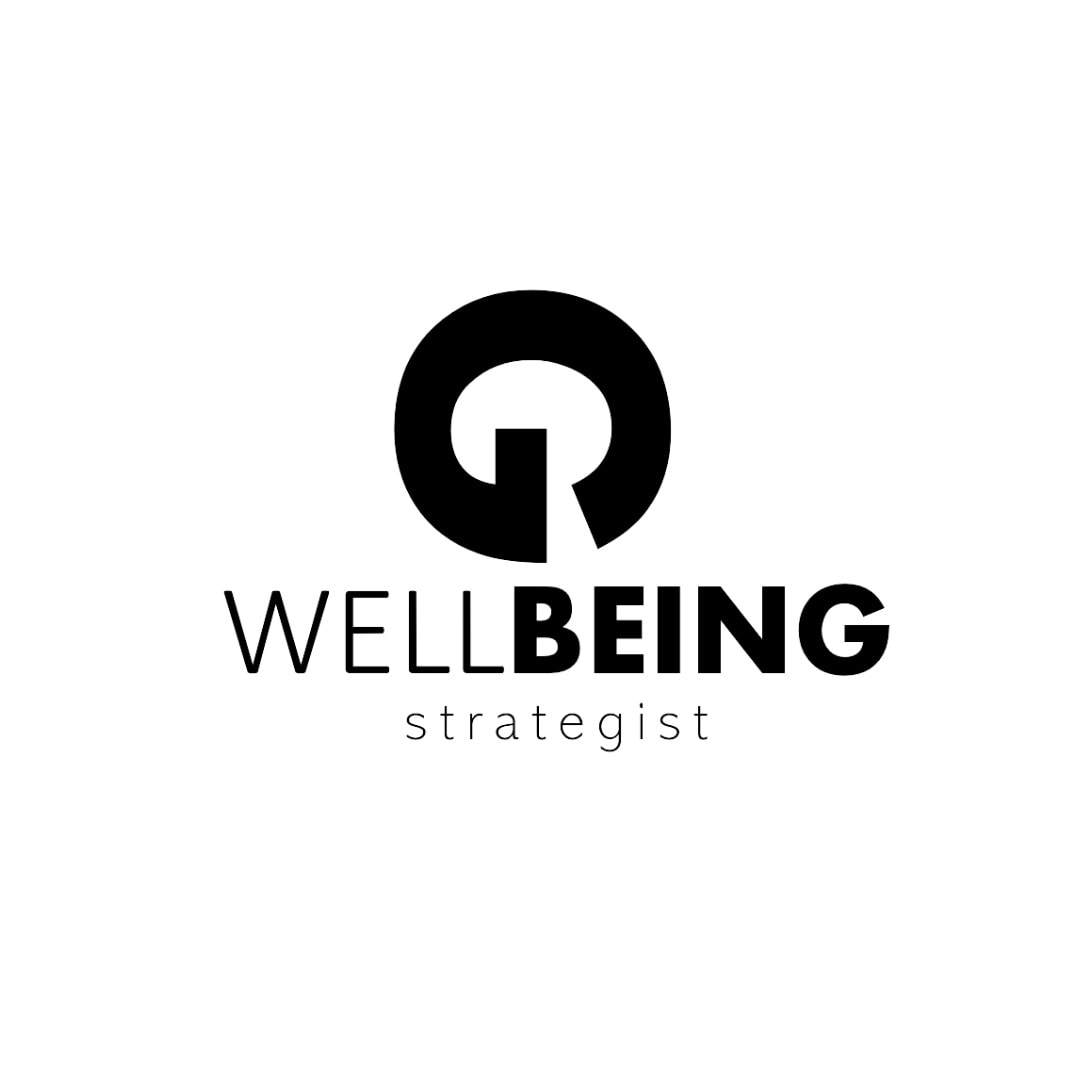How to Prevent Executive Burnout
Feeling overwhelmed, exhausted, or unproductive at work? You might be experiencing burnout – a common yet serious challenge in today’s fast-paced world.
This occupational syndrome, defined by the World Health Organization, consists of emotional exhaustion, negativity, and professional inefficacy.
But don’t worry – there’s hope for reversal. Even better news is that burnout can be prevented. From this article you can learn how to do it.
Table of Contents
Scientists have uncovered the secret to avoiding and overcoming burnout: managing stress and increased self-care. The 3M framework can be very helpful.
This approach involves taking macro breaks (a day off every month), meso breaks (one to two hours off every week), and micro breaks (resting for a few minutes several times a day) to disengage from work stress and restore your energy. By incorporating mindful breaks into your daily routine, you can prevent burnout and regain balance.

What is executive burnout?
Executive burnout is a serious issue causing chronic exhaustion due to prolonged and uncontrolled stress in high-pressure work environments. This can happen to anyone from small business owners to executives and entrepreneurs.
It’s important to note that burnout differs from regular stress, as stress is a natural response to demanding situations. Burnout, on the other hand, is persistent and can lead to severe physical and mental health issues, such as anxiety, depression, or even suicidal tendencies. It’s essential to understand the causes and effects of burnout to provide effective solutions and prevent further harm to individuals suffering from this condition.
Why is it important to prevent executive burnout?
Preventing executive burnout is crucial for busy entrepreneurs because it safeguards their long-term success and well-being. Burnout negatively impacts productivity, decision-making abilities, and creativity, hindering business growth.
By prioritising self-care and avoiding burnout, entrepreneurs can sustain their mental and physical health, maintain a healthy work-life balance, and lead their businesses effectively.
Taking proactive measures to prevent burnout ultimately ensures sustained motivation, optimal performance, and the ability to navigate challenges with resilience, resulting in greater entrepreneurial success.
Understanding Executive Burnout

What are the symptoms of executive burnout?
Several factors can contribute to executive burnout, including long working hours, high job demands, lack of control over one’s work, role ambiguity, and work-life imbalance. Furthermore, the responsibility of making critical decisions and managing teams can also add to the stress levels.
The symptoms of executive burnout are multifaceted, impacting both physical and mental health. Physically, individuals might experience fatigue, insomnia, frequent illness, or headaches. On the mental health front, symptoms can range from feelings of detachment and cynicism towards work, to reduced professional efficacy, anxiety, and depression. In severe cases, burnout can lead to substance abuse as a coping mechanism.
The impact of executive burnout on individuals and businesses
Executive burnout has severe consequences for both individuals and organisations. For individuals, burnout can lead to deteriorating health, strained relationships, and decreased job satisfaction. It may also result in reduced productivity, compromised decision-making abilities, and withdrawal from responsibilities, all of which can negatively impact career progression.
For businesses, the consequences are equally grave. Organisations can experience increased turnover, decreased employee engagement, and reduced productivity. Moreover, the effects can cascade down the hierarchy, as executives play a crucial role in setting the tone for the entire organisation. A burnt-out executive can contribute to a toxic work culture, negatively impacting team morale and overall business performance.

Recognising the Signs of Burnout in Yourself and Others
Being able to recognize the signs of burnout is crucial for intervention and prevention. In oneself, it might start with feelings of exhaustion, irritability, and a growing cynicism towards work. Decreased productivity, difficulty concentrating, and a lack of satisfaction from achievements are other early warning signs.
Observing burnout in others can be a bit more challenging, but some signs to look out for include changes in behaviour, such as increased absenteeism, decreased performance, cynicism, and disengagement from work or coworkers. Physical signs, like looking tired, changes in weight, or frequent illness, might also indicate burnout.
Prevention and intervention strategies should involve fostering a supportive work environment, promoting balance, and providing resources for stress management. It’s important to remember that executive burnout is not a personal failing but a systemic issue that requires organisational change.
The Role of Work-Life Balance
Work-life balance refers to the equilibrium that an individual needs between their work demands and personal life. For executives and people in leadership positions, achieving this balance can be particularly challenging due to the high levels of responsibility and the demanding nature of their roles. However, maintaining a healthy balance is not just beneficial, but essential for overall wellbeing and productivity.
The benefits of achieving a sustainable work-life balance
There are numerous benefits to achieving a sustainable work life balance. On a personal level, it can lead to improved health and wellbeing, reduced stress, and higher levels of satisfaction and happiness. It can provide individuals with time to pursue personal interests and spend quality time with family and friends, leading to a richer, more fulfilling life outside of work.
Professionally, a well-balanced work-life dynamic can lead to increased productivity, enhanced creativity, and improved job satisfaction. It allows executives to bring a refreshed and rejuvenated perspective to their roles, which can have a positive impact on decision-making and leadership abilities.

What are the challenges of maintaining work-life balance as an executive?
Despite the clear benefits, maintaining a work-life balance as an executive comes with unique challenges, one of which is chronic stress. The responsibility of leading an organization or team can lead to long working hours and blur the lines between professional and personal life. The need to be constantly available and the pressure to meet high performance expectations can create a culture of workaholism, which further adds to the chronic stress experienced by executives.
Executives may struggle with delegating tasks to their team members, feeling that they need to be involved in all aspects of the business. This can lead to overwork and an inability to disconnect from job responsibilities. Furthermore, the digital age, with its always-on culture, can exacerbate these challenges, making it even harder to draw boundaries between work and personal life.
Loneliness is another factor that makes work-life balance difficult for busy and ambitious executives. The demanding nature of their work can consume the majority of their time and energy, leaving little room for meaningful connections and social interactions. The relentless pursuit of success and the constant pressure to meet deadlines and exceed expectations can isolate them from their friends, family, and even their own sense of self.
Overcoming these challenges requires deliberate effort and strategies, such as setting clear boundaries, prioritizing tasks, delegating effectively to team members, and ensuring regular breaks for relaxation and rejuvenation. It also calls for a shift in organizational culture to one that values and promotes work-life balance, which can be fostered through initiatives like retreats that allow executives to recharge and connect with their team members in a more relaxed setting.

Strategies for Preventing Executive Burnout
Preventing burnout requires a carefully curated approach that includes assessing the current functioning, establishing the areas of functioning that need to be improved, a well-defined strategy, implementation of new habits of self-care and personal wellbeing, and monitoring the progress.
Setting realistic goals and expectations, and establishing clear boundaries between work and personal life are some of the things that need to be implemented and followed up. It’s essential for executives to delegate tasks to their team members effectively, empowering them to take on responsibilities and reducing the burden on themselves.
Prioritising self-care and personal wellbeing
Neglecting our basic needs, such as sleep, rest, hydration, nutrition is a frequent mistake of many busy decision-makers. By constantly prioritising our work, the deadlines, projects etc we forget about that we are humans and we have human needs.
Importance of physical exercise and healthy eating habits
Prioritising self-care and personal wellbeing is crucial in combating chronic stress and burnout. Neglecting basic needs such as sleep, rest, hydration, and nutrition can exacerbate the impact of stress on executives.
In addition to that, the importance of physical exercise and healthy eating habits cannot be overstated. Regular physical exercise and a balanced diet play a vital role in managing stress, improving mood and energy levels, and enhancing overall physical health.
Having a support system, such as a peer mentor or accountability partner, can also be massively beneficial in helping executives stay motivated and on the right track when it comes to self-care and work-life balance.
Consideration of retreats or similar activities can be valuable as they provide an opportunity for executives to step away from the daily grind and focus on rejuvenation and building stronger bonds with their team members.

Incorporating stress management techniques
Incorporating stress management techniques, such as meditation and mindfulness, can be particularly beneficial for executives. These techniques can help manage stress, improve mental clarity, and increase emotional resilience, which can ultimately help prevent burnout. Regular practice of these techniques can be integrated into one’s daily routine, such as starting the day with a short meditation or taking mindful breaks throughout the day.
Sound healing and yoga are other techniques which I practice regularly and recommend to my clients.

Setting realistic goals and expectations
Many ambitious managers, directors and business owners are guilty of committing this mistake, not being realistic with their goals, or how much they can personally deliver.
A lot of people compare themselves with others, especially while scrolling social media, where people tend to boast about their successes and oftentimes present only the victory moments. That makes us feel like failures, as we inevitably compare ourselves with the best-version of others. Setting unrealistic goals leads to stress and burnout.
In order to set realistic goals, you need to assess what other goals are you currently pursuing, what time your goals require in order to be achieved and set the importance of your goals., as not all goals were created equal.
Effective time management techniques
Effective time management is crucial in preventing burnout. This involves prioritising tasks according to their importance and urgency, and planning one’s time accordingly. Techniques such as the Eisenhower matrix or time blocking can help executives to manage their time more efficiently, reducing stress and increasing productivity.
Delegating tasks and learning to say “no”
Delegating tasks is another important strategy for preventing burnout. By entrusting tasks to others, executives can free up time to focus on higher-level strategic work. Learning to say “no” to non-critical tasks or responsibilities is equally important, as it helps to manage workload and prevent over commitment.
If you feel like you can’t delegate tasks, as you believe that you have to do everything by yourself, then it’s time to challenge that belief. Is it helping you grow and achieve your goals, or is it causing stress and frustration?
If you are ready to change your beliefs, you will benefit from Reprogramming your Mind With Positive Beliefs.

Establishing boundaries and managing workload.
Creating a clear separation between work and personal life is essential for preventing burnout. This might involve setting specific working hours, avoiding checking work emails or taking calls during personal time, and ensuring regular time for relaxation and leisure activities.
Effective communication and negotiation with colleagues and superiors
Effective communication and negotiation skills are vital for managing workload and establishing boundaries. This might involve discussing workload concerns with superiors, negotiating deadlines, or pushing back against non-essential tasks. It’s crucial for executives to communicate their needs and limitations to maintain a sustainable work-life balance and prevent burnout.
Building a Supportive Work Environment
A supportive work environment can play a significant role in stopping executive burnout and promoting a healthy work-life balance. Creating such an environment involves promoting a positive organisational culture, encouraging open communication, and implementing flexible work arrangements.
Promoting a culture of work-life balance within the business
Promoting a culture of work-life balance within a business involves more than just instituting policies; it requires a shift in attitudes at all levels of the organisation. This can include recognizing and rewarding employees for their productivity, not just the hours they work, and encouraging regular breaks and time off. Leaders play a crucial role in setting the tone by modelling healthy work-life balance behaviours themselves.
Encouraging open communication and feedback channels
Open communication and feedback channels are vital to creating a supportive work environment. This involves encouraging employees to voice their concerns and ideas, and implementing feedback into policies and practices. Regular check-ins and open-door policies can foster a culture of transparency and mutual respect.
Implementing flexible work arrangements and policies
Flexible work arrangements and policies can significantly improve work-life balance and reduce burnout. This could include flexible working hours, remote work options, and job-sharing opportunities. Such policies should be clearly communicated and equally accessible to all employees to ensure a fair and supportive environment.

Making Work-Life Integration easier
In today’s fast-paced and interconnected world, the traditional idea of work-life balance is evolving into work-life integration. This approach recognizes that work and personal life often intersect and overlap, and it’s about finding a way to blend the two effectively.
Identifying opportunities to integrate work and personal life
Opportunities for work-life integration can be found in everyday activities. This could include taking a break from work to exercise, integrating personal errands into the workday, or using travel time for personal development. The key is to be mindful and intentional about integrating work and personal activities in a way that feels balanced and sustainable.
Leveraging technology and tools for increased efficiency
Technology can play a vital role in facilitating work-life integration. Digital tools and applications can help streamline tasks, automate processes, and increase efficiency, freeing up time for personal activities. However, it’s important to use technology mindfully to avoid creating an “always-on” culture that can lead to burnout.
Strategies for maintaining a healthy work-life blend
Maintaining a healthy work-life blend involves setting clear boundaries, prioritising tasks, and taking time for self-care. Regular check-ins with oneself can help to assess whether the current blend feels sustainable and adjust accordingly. It’s also important to remember that there’s no one-size-fits-all approach, and what works best will depend on individual preferences and circumstances.
Seeking Professional Help and Support

While preventative measures and self-care strategies are crucial in managing stress and preventing burnout, it’s equally important to recognize when professional help and support may be needed.
Recognising when it’s time to seek help
Recognising when it’s time to seek help can be challenging, especially for executives who are accustomed to managing high levels of responsibility and stress.
However, persistent feelings of exhaustion, cynicism towards work, and a sense of ineffectiveness are key indicators of burnout that should not be ignored.
Physical symptoms such as chronic fatigue, insomnia, and frequent illnesses, as well as feelings of anxiety or depression, are also signs that professional help may be needed.
Exploring resources and support networks
There are a variety of resources and support networks available to individuals experiencing burnout. Employee Assistance Programs (EAPs) often offer services such as counselling and referrals to mental health professionals.
Online resources, including mental health apps and teletherapy services, can also be a valuable source of support. Additionally, reaching out to trusted colleagues, mentors, or professional networks can provide emotional support and practical advice.
Benefits of professional coaching and therapy
Professional coaching and therapy can be highly beneficial for executives experiencing burnout. Coaches and therapists can provide strategies for managing stress, improving work-life balance, and enhancing leadership skills.
They can also provide a safe and confidential space to explore challenges and concerns. Cognitive-behavioural therapy (CBT),mindfulness-based stress reduction (MBSR), as well as hypnotherapy, have been shown to be effective in treating burnout, as they help individuals to identify and change negative thought patterns that contribute to feelings of burnout.
In essence, embracing professional assistance and guidance is an essential stride towards effectively managing and triumphing over burnout. It’s a proof of your inner strength and keen self-awareness, a powerful affirmation that seeking support when necessary is far from a weakness.
If you desire a personalized and meticulously crafted wellness strategy, carefully adjusted to your needs and put into action by an esteemed psychologist at your side, I extend an invitation to explore this remarkable opportunity.

Create Sustainable Work-Life Balance
Achieving sustainable work-life balance is essential for executives to prevent burnout and enhance overall productivity and well-being. This requires prioritising self-care activities such as regular exercise, healthy eating, and stress management practices like mindfulness and meditation.
It’s also important to set realistic goals and expectations through effective time management, delegation, and the ability to say “no” when necessary. Establishing clear boundaries between work and personal life, and creating a supportive work environment that promotes work-life balance and open communication, can further support this endeavour.
As work and personal life continue to intersect in today’s interconnected world, exploring work-life integration and leveraging technology for efficiency can offer additional ways to maintain a balanced lifestyle. Lastly, recognizing when professional help is needed and seeking support through coaching or therapy is crucial for managing and recovering from burnout.
Interested how to achieve it sooner rather than later, with a wellbeing strategist at your side? Let’s talk. Book a complimentary call to discuss your needs and gain more clarity.




